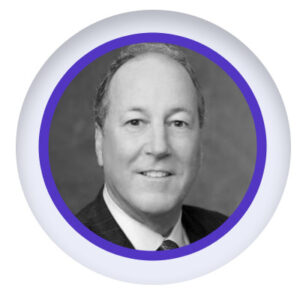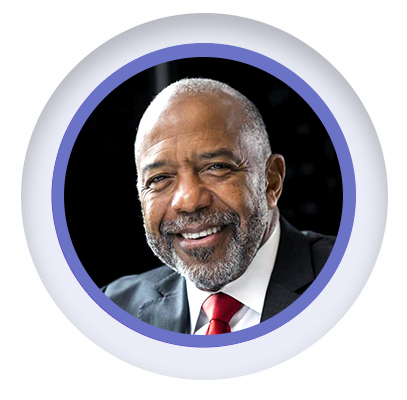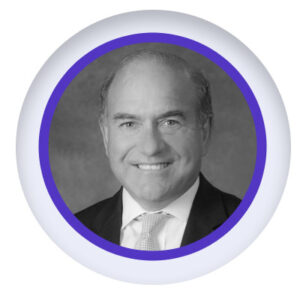The Growing Primary Care Shortage & How Recuro Is Changing The Landscape
In the ever-changing landscape of Primary Care, the traditional role of the neighborhood doctor is being reshaped. Major players like hospitals, insurers such as Aetna-CVS Health, and corporate giants like Amazon are rapidly acquiring primary care practices, signaling a shift away from the familiar concept of a local doctor.
Lucia Agajanian, a 25-year-old freelance film producer in Chicago, prefers the convenience of visiting a local clinic for minor health concerns or utilizing online video visits rather than having a dedicated primary care doctor. She appreciates the efficiency of expressing her needs and experiencing short wait times for appointments. “I really liked that,” she said.
On the other hand, Olga Lucia Torres, a 52-year-old narrative medicine instructor at Columbia University in New York, laments the loss of her long-term primary care doctor, who diligently monitored her conditions, such as lupus and rheumatoid arthritis, and ensured she received the necessary vaccines and screening tests. Two years ago, Torres received a disheartening letter stating that her doctor was transitioning to a “boutique practice” and would require a hefty $10,000 retainer fee to continue her care. Feeling abandoned, Torres expressed her disappointment, saying, “I thought we were in this together!”
Significant Landscape Changes
These stories exemplify an ongoing reality: the primary care landscape is undergoing significant changes that can impact patients’ access to care and its quality, both in the present and the future. A strong and lasting relationship with a primary care doctor, who possesses knowledge of a patient’s medical history and can effectively monitor new health issues, has long been considered the cornerstone of a high-quality healthcare system. However, primary care in the United States lags behind other high-income countries in terms of investment, and the country has a smaller proportion of primary care physicians compared to its European counterparts.
According to the Robert Graham Center, approximately one-third of all physicians in the U.S. are primary care doctors, including family medicine physicians, general internists, and pediatricians. However, other researchers argue that this figure is lower. The Peterson-KFF Health System Tracker reports that only 12% of U.S. doctors are generalists, compared to 23% in Germany and as high as 45% in the Netherlands.
Consequently, finding a doctor and securing a timely appointment often prove challenging, with wait times stretching for weeks or even months. Ann Greiner, the president and CEO of the Primary Care Collaborative, describes this problem as one that has been brewing and is now boiling over in some communities. She states, “It’s hard to find that front door to the health system.”
Physician Shortage to Continue
Moreover, the influx of new physicians entering the field falls short of the number of practicing doctors, indicating that shortages will worsen over time. Factors contributing to the decline in interest include lower salaries for primary care compared to other medical and surgical specialties, burnout among practicing doctors due to cumbersome electronic health record systems and limited appointment times, and the retirement or sale of practices by existing primary care providers.
Hospitals, insurers like Aetna-CVS Health, and other corporate entities, including Amazon, are capitalizing on this situation by acquiring primary care practices, thereby accelerating the departure from the traditional concept of a neighborhood doctor like “Marcus Welby, M.D.” Currently, 48% of primary care physicians work in practices they do not own. Among these doctors, two-thirds are not employed by other physicians but by private equity investors or corporate entities, according to data from the “Primary Care Chartbook” published by the Graham Center.
Consequently, patients who seek care from these practices may not consistently see the same doctor during each visit. In fact, they might not see a doctor at all but rather a paraprofessional, such as a nurse practitioner or a physician assistant, operating under the doctor’s license. This trend has been accelerated by new state laws and changes in Medicare policy that relax requirements for physician supervision and billing. Jobs in this sector are expected to be among the fastest-growing in the healthcare industry over the next decade.
Higher Demand for Primary Care Meets Low Supply of Doctors
Overall, the demand for primary care is increasing, partially driven by the high enrollment in Affordable Care Act plans. However, this surge in patients, combined with the limited supply of doctors, has led to a steady decline in the number of people reporting a usual source of care, whether it be an individual doctor or a specific clinic or practice.
This situation raises questions regarding the reasons behind this decline. Is it due to poor access, unaffordability, or a shift in patient preferences away from established relationships with doctors? Christopher Koller, president of the Milbank Memorial Fund, ponders these issues and asks whether it reflects a disconnection in society or a tendency to go it alone.
As a consequence, patients often face frustratingly long wait times. A recent survey by a physician staffing firm revealed that it now takes an average of 21 days to secure an appointment with a family medicine doctor, a subgroup of primary care that includes general internists and pediatricians. These physicians are often the initial point of contact for patients seeking healthcare. This contrasts with other countries, where patients may experience extended waits for elective procedures but generally have shorter wait times for primary care visits.
Low Incentives for Primary Care Providers
Another concern is the impact of these factors on the recruitment of new primary care physicians. Natalie A. Cameron, an instructor of medicine at Northwestern University, chose primary care during medical school because she enjoyed building relationships with patients and had a specific interest in prevention and women’s health, which are prominent aspects of primary care. However, she understands why many of her colleagues opted for different specialties. Some are attracted to higher salaries, while others are deterred by the perception that primary care involves extensive paperwork, coordination of non-medical issues, and an overwhelming workload.
The key question is the extent to which having a regular source of care influences medical outcomes and costs. Which patient populations benefit most from having a close relationship with a primary care doctor? While younger individuals often value the convenience of urgent care or alternative options due to long wait times for primary care, it remains uncertain whether their long-term health will suffer as a consequence.
Millenials Leading the Way for Ad-Hoc Care
Many patients, particularly the young and generally healthy, embrace the new normal and prioritize alternatives that offer shorter wait times. This preference is particularly pronounced among millennials, who prioritize convenience, such as one-off video calls or visits to retail clinics, over longstanding relationships with doctors, especially when faced with lengthy waits for traditional appointments.
Retail clinics, like CVS’ Minute Clinics, have become increasingly popular among patients. These clinics advertise “in-person and virtual care 7 days a week.” Creagh Milford, a physician and senior vice president of retail health at CVS Health, stated that their clinics, situated within stores across the U.S., treated over 5 million people last year. A data products firm’s recent study indicates a 200% growth in the utilization of retail clinics over the past five years.
While increased access to alternatives can be beneficial, health policy experts emphasize the importance of maintaining an ongoing relationship with a regular healthcare provider, especially as individuals age and become more likely to develop chronic conditions or other medical issues. Christopher Koller states, “There’s a lot of data that show communities with a lot of primary care have better health.”
Lack of Regular Primary Care Doctor Correlated with Less Than Ideal Health Outcomes
Studies demonstrate that patients with a regular primary care doctor or practice are more likely to receive preventive care, such as cancer screenings and flu shots, and have a lower mortality rate in the event of a heart attack. Physicians who see patients regularly are better equipped to identify patterns in seemingly minor concerns that may signify more significant health problems. Yalda Jabbarpour, a family physician in Washington, D.C., and the director of the Robert Graham Center for Policy Studies, highlights the consequences of seeking care from multiple providers and platforms for seemingly straightforward issues like urinary tract infections. Under such circumstances, critical underlying conditions, such as kidney stones or immune deficiencies like diabetes, may go undetected.
Experts unanimously agree that navigating the changing landscape and ensuring accessible care without compromising quality will be as complex as the challenges contributing to long wait times and waning interest in primary care. Coordinating care across different doctors, locations, health systems, and electronic health records presents an intricate task. Nevertheless, patients’ experiences sometimes prompt them to reconsider their choices.
Lucia Agajanian, for example, is reevaluating her decision to piece together her healthcare rather than having a dedicated primary care doctor or clinic. A work-related injury that resulted in shoulder surgery has prompted her to realize the value of establishing a consistent relationship with a healthcare provider. “As I’m getting older, even though I’m still young,” she explains, “I have all these problems with my body, and it would be nice to have a consistent person who knows all my problems to talk with.”
In Summary
The evolving landscape of primary care presents transformations and challenges that can significantly impact patients’ access and quality of care. The traditional role of the neighborhood doctor is being reshaped as hospitals, insurers, and corporate entities acquire primary care practices. The shortage of physicians, longer wait times for appointments, and changing patient preferences contribute to the decline in patients reporting a usual source of care.
The shift towards alternatives like retail clinics offers convenience but risks severing ongoing relationships with regular healthcare providers. Maintaining a consistent source of care has demonstrated positive effects on medical outcomes and preventive care. As the primary care landscape continues to evolve, it is crucial to address the complexity of coordinating care and ensure accessible, high-quality primary care for all patients. That’s where Recuro comes in! It’s estimated 33% of Americans do not have an established Primary Care Provider as of today. With Recuro’s VPC solution, members have the option to choose a dedicated physician to see on each virtual visit. Imagine establishing consistent care with a doctor who knows your medical history and can provide personalized treatment plans. Best of all with our Complete Care offering, you get access to:
• A Dedicated Physician
• At-Home Labs & Genomics Testing
• Integrated Behavioral Health
• Chronic Care Management
• Health Risk Assessments
• Integrated Prescriptions
• Coordinated Urgent Care
At Recuro, we recognize the importance primary care providers make when establishing long-term health and managing comorbidities. Accessibility, personalized treatment plans, and medical data exchange all on 1 platform is the difference between high-quality preventative care vs. just treating the symptoms. This Open Enrollment, make the better choice… choose Recuro! To learn more about our VPC Solution – click here: https://recurohealth.com/virtual-primary-care/










